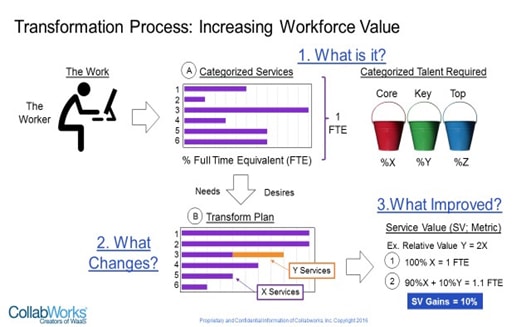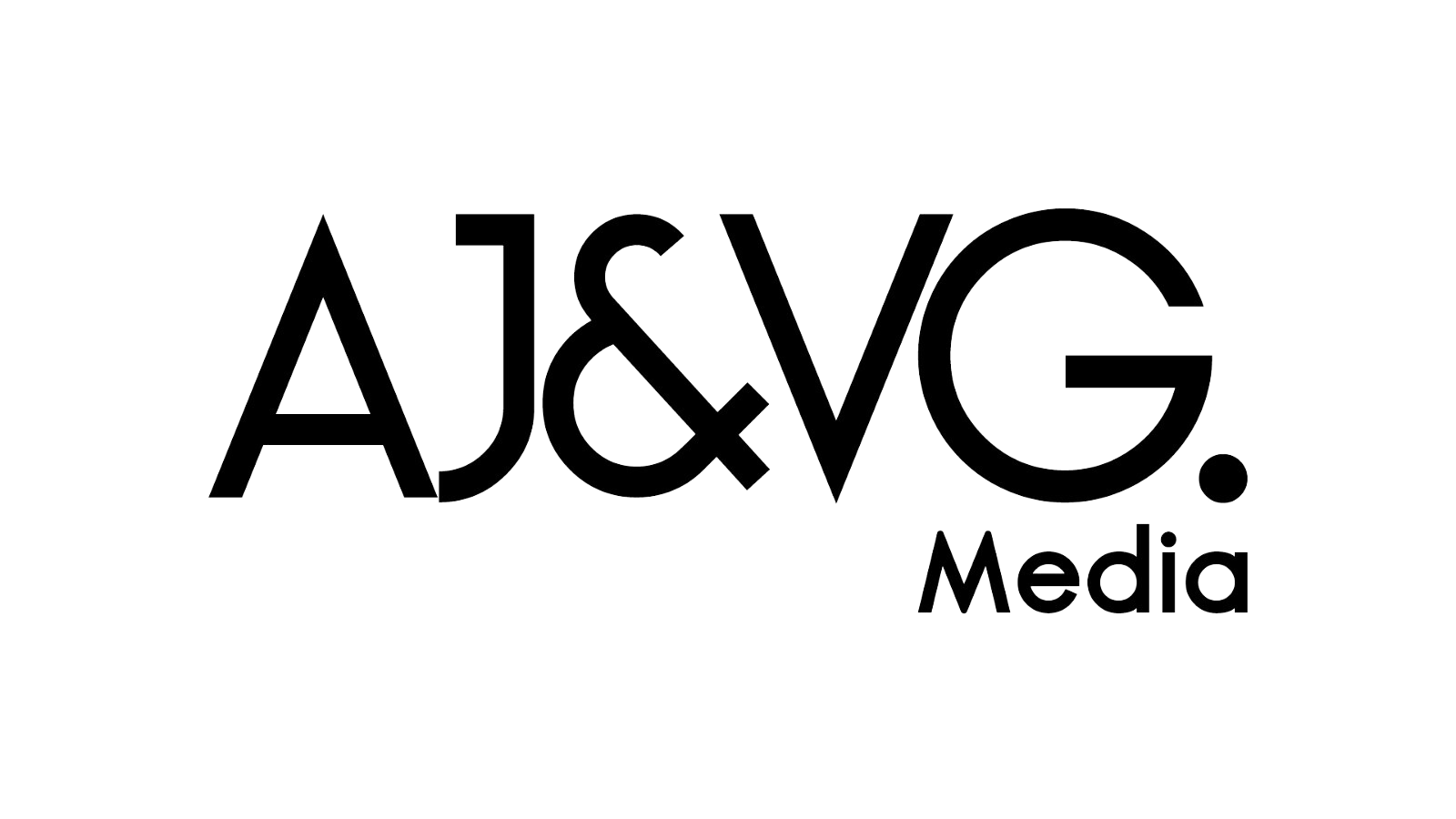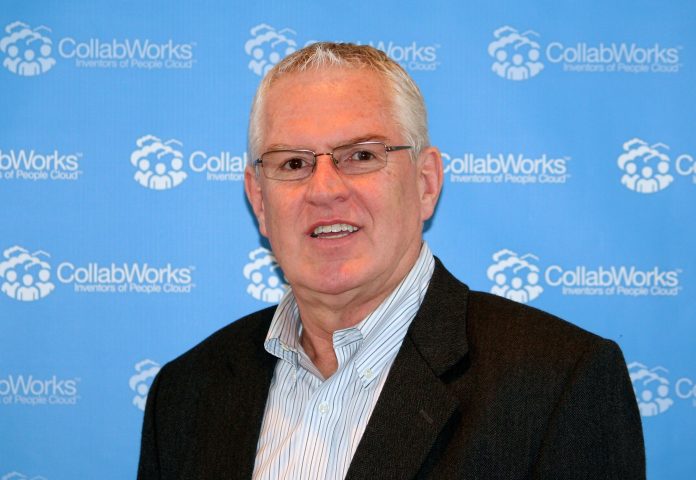What if there was a way to identify the value of your workforce? I’m not talking about the cost, but the value of the work created and delivered as a set of services performed by each person in your workforce every day. What if it was simple to capture and measure the information you need to determine the value of services delivered to your customers? Would that allow you to effectively focus each worker’s time on the most valuable services for your company?
This article discusses a unique and powerful way to accomplish this transformation through the Work as a Service (WaaS) process. In today’s world, it is essential to be highly adaptable and focused on what matters most: THE CUSTOMER.
This system documents how talent is being applied to services and provides a consistent way to measure, track and optimize the value produced by your workforce as you make improvements along the way to transform your organization.
THREE KEY STEPS
The WaaS process requires three primary steps to set up and enable this transformation system:
Step 1: Define and quantify the work being performed by each worker as a set of services, each with attributes that include the talent required and other key service factors.
Step 2: Once the services are defined and quantified, determine and document improvements to increase the value of the work performed.
Step 3: Calculate the service value of the work based on the planned changes from the current work profile to the future work profile.
This process captures and records both the current service state and the planned (future) service state of the work being performed and the talent being used. Changes are quantifiable to help prioritize the importance of the service changes.
A typical services profile includes six to eight services with various X, Y, and Z talent requirements. Documenting the work (as services) is essential in measuring its value; this then leads to identifying and enacting changes that will provide better service to internal and external customers and enhance the value of that work.
HOW DOES THIS PROCESS WORK?
WaaS uses a software application to gather information from your workers. All work is identified as a type of service, and each service is described and aligned with customers and the relative value of that service, as well as mapped to other attributes.
First, services are organized into categories and sub-categories specific to each work group. The work is also categorized by the level of talent/experience required to perform the service – X (Core), Y (Principal or Key), and Z (Differentiator or Top) – and each level represents the relative value of a service.
To define and document their work in this system, each worker fills out a services profile by selecting relevant service categories and then sub-categories that best identify where their effort is being applied. For each sub-category selected, workers add a short description of the task or effort and define the current percentage of time spent on that service as a portion of the Full Time Equivalent (FTE) for their role. This process is repeated until the worker has defined 100% of their FTE of services.
Next, the worker describes what they want their future services profile to look like. This new profile is called a “Transformation Plan” and it clearly describes changes in the current services profile needed to meet the needs and objectives of the work group and individual. Both the current and planned services profiles are reviewed and approved by the manager based on clear communication with the worker about objectives, priorities and development needs.
As the WaaS process is repeated, a record is established of services performed, the changes achieved, and the overall value of each service as performed by each worker. This data is valuable for performance evaluations and for matching the worker to the organization’s service needs.

CONTINUOUS IMPROVEMENT
The system allows for ongoing identification and tracking for iterative improvements. Once the current use of talent is clearly captured, improvements can be identified that address both the organization’s and the individual’s objectives.
Improvement opportunities are filtered by categories such as communication or automation and then prioritized. Projects to implement these improvements are selected based on (1) need, and (2) the leadership and motivation of those who want to execute the improvement.
Where possible, non-managers are selected to lead or co-lead improvement projects while managers and other stakeholders play a coaching and mentoring role. As transformation projects are defined, those affected by the project are asked to reflect on the project’s outcomes in their own individual transformation plans.
This ties both project and individual commitment to the same improvement goal.
CHANGE MANAGEMENT PROCESSES
The WaaS process is compatible with and complimentary to any of the efficient project methodologies. Lean projects, for example, can use the WaaS process to capture the current and transformation states of individuals affected by the project’s transformation.
All of the primary project methodologies including WaaS share common outcome characteristics such as customer-driven benefits, clear value-add, ongoing learning, and responsiveness to customer feedback. Many methodologies also identify and focus on eliminating waste, but WaaS is unique in measuring service value and margin contribution at both the individual and group levels.
The WaaS process is not only self-organizing but also promotes leadership at all levels in the organization. One of its primary objectives is to build leadership capacity through coaching and supporting non-managers to execute transformations. Building leadership capacity increases the adaptability of the organization and has proven to significantly increase workforce engagement as individuals participate in “bubble-up” improvement projects.
The WaaS process includes the clear use and alignment of the right talent to perform the right work. Transformational changes are measurable at both the group and individual levels, including margin contribution by service and individual.
The final outcome: The talent value of your workforce is identified, services improve, and talent is better aligned to the areas where their skills are most needed in the organization.
Lee Penning
CIO, Collabworks




